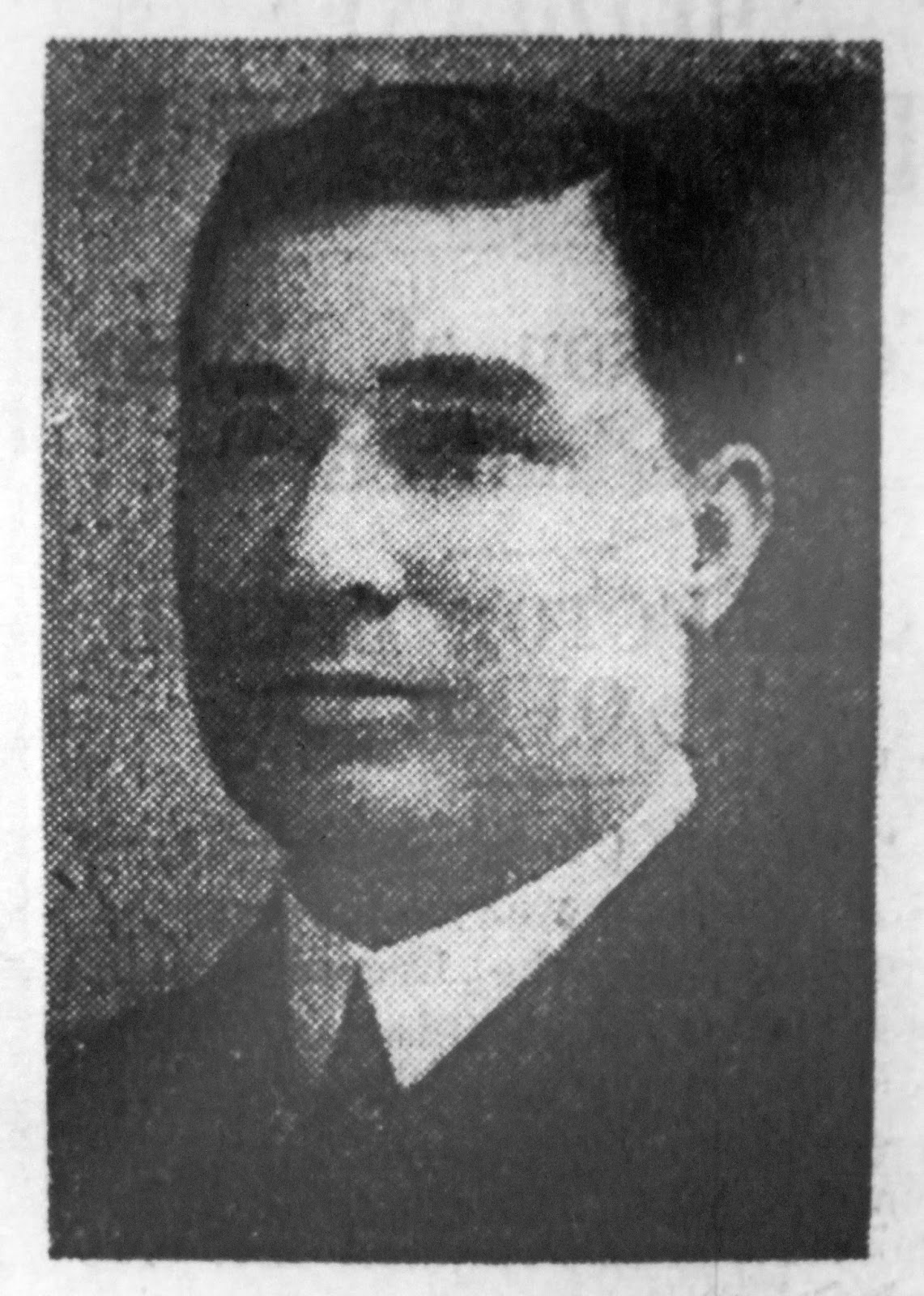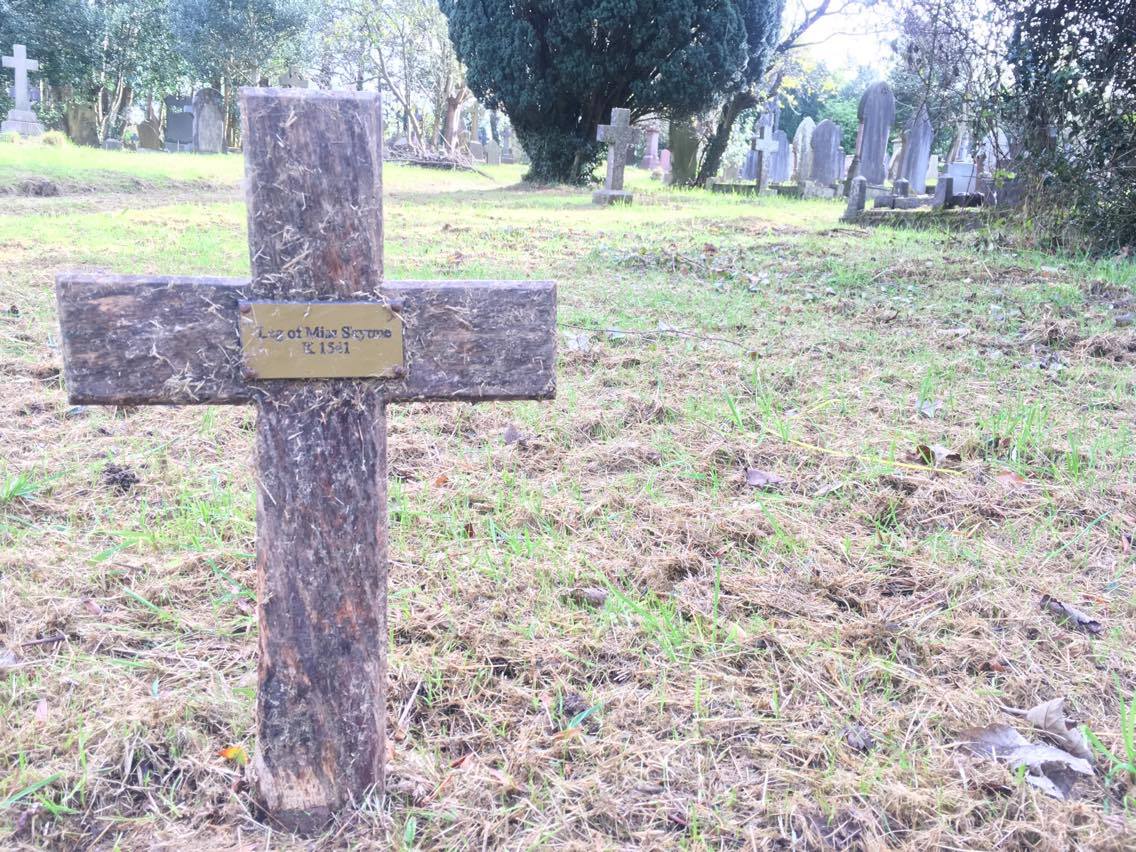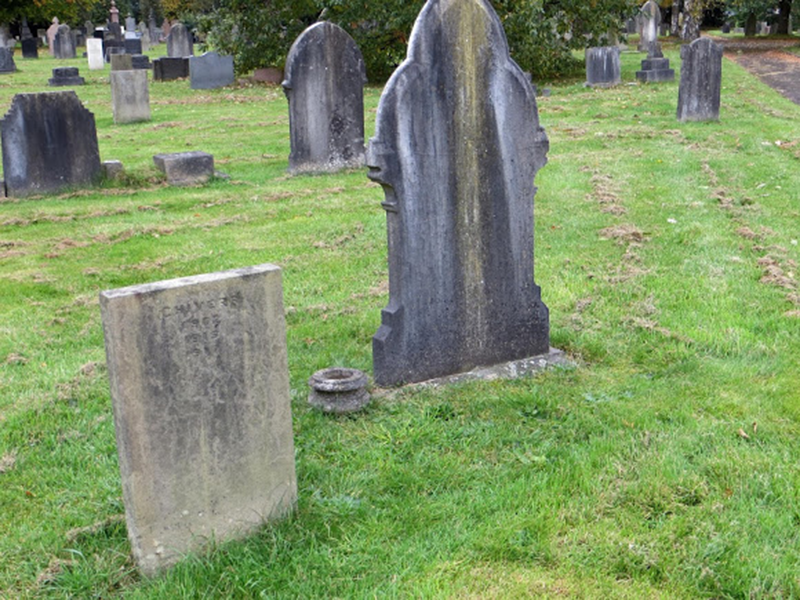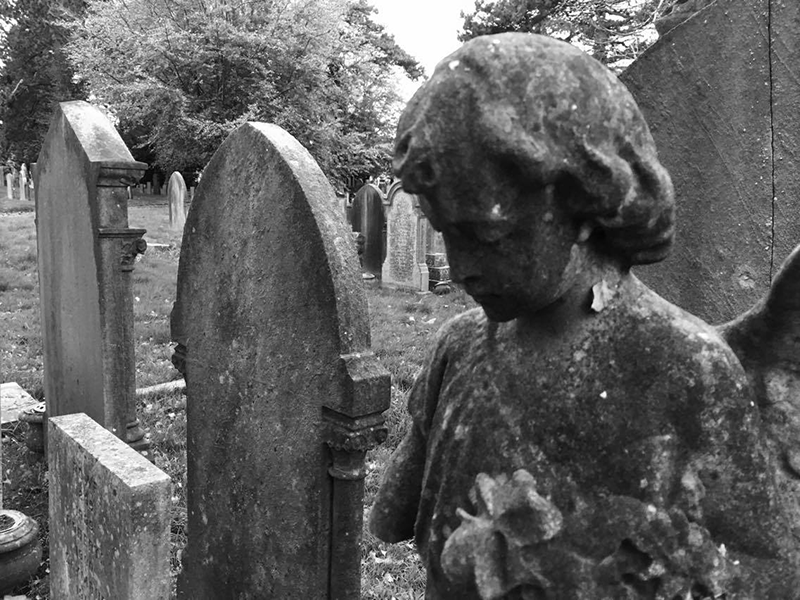The severed legs of Cathays Cemetery
Charles Cravos [1865 – 1936]

Cravos was hit in the leg by a cricket ball when he was 13 and the wound became gangrenous. Records show that the leg was amputated without anesthetic. Cravos was given rum and knocked out, however, when he came around the doctors realised they hadn’t taken enough off so they had to do it twice. As a wealthy ship owner, Cravos is also said to have kept liquor from every country in the world, while also boasting four Rolls Royces, one for each season. While being chauffeured around Cardiff, if Cravos saw another one-legged man he’d have the car stop, and challenge him to a race. He also owned an iron monger store in Bute Street which was fined for its storage of dynamite.
Edith Skyrme [1869 – 1924]

A 16-year-old Miss Skyrme descended 800ft down a coal mine shaft with seven other young ladies as part of a colliery tour. They had walked about 300 yards along the shaft, when a tremendous roar was followed by a fully loaded tram crashing through a ventilation control door about 15 yards ahead of them. All members of the group tried to get out of the way and ended up in the coal dust and debris on the floor. All were badly shaken and bruised, but Miss Skyrme and another lady were more severely injured. She was buried with her husband in St Mary’s Church graveyard in Whitchurch so was never reunited with her limb.
Samuel Chivers [1844 – 1917]

In April 1883 Samuel was in an accident with a horse drawn cart, as a result of which he lost a leg. That leg was buried in Cathays Cemetery. He and his family were then living on Richmond Road. Half a dozen or so years later Samuel and his ever-expanding family, Mrs Chivers, twelve children, a cook plus domestic servants, moved to Llandough, near Penarth and it was thought that Samuel was buried, minus his leg, in Penarth.
Five amputated legs are now known to have been buried in Cathays Cemetery.

Newly discovered records show that two additional legs had been given their burials in Cathays Cemetery.
Friends of Cathays Cemetery have found records of two additional amputated legs being buried in the 110 acre graveyard, making a curious total of five legs buried without their owners attached.
The new legs, once belonging to William Dent and Amelia Newton, join Edith Skyrme, Charles Cravos and Samuel Chivers in the list of Victorian Cardiffians who buried their legs while still alive.
John Farnhill, treasurer of Friends of Cathays Cemetery, said: “You have to put Cathays Cemetery in the context of opening in 1859. Cemeteries in Cardiff were getting full, Cardiff was growing, and they needed a new space.”
“It isn’t uncommon to bury legs. People didn’t, and still don’t, know what to do with them.”
Wealthy eccentric Charles Cravos lost his leg to a cricket injury when he was 13, whereas Edith Skyrme was amputated after a tragic mine shaft accident. According to The Weekly Mail [1883] Chivers lost his leg from being “thrown out of a [horse and carriage] trap on the way from Pontypridd.”
Amelia Newton [1841 -1916] was amputated at the age of 60 most likely due to illness, and buried her leg in an unmarked grave. She was later laid to rest separate from her leg in Cathays Cemetery at the age of 75.
The location of William Dent [1849 – 1913] and his leg is also mysterious, they are both buried in unmarked graves. Dent’s son, also named William Dent, served in the Royal Navy and was fatally wounded at the Battle of Jutland [1916]. By researching his military history, Alt Cardiff has determined the year of his father’s death, previously unknown to the cemetery.
Dent and Horten’s stories and the locations of their legs are still under investigation.
The severed legs of Cathays Cemetery
Charles Cravos [1865 – 1936]

Cravos was hit in the leg by a cricket ball when he was 13 and the wound became gangrenous. Records show that the leg was amputated without anesthetic. Cravos was given rum and knocked out, however, when he came around the doctors realised they hadn’t taken enough off so they had to do it twice. As a wealthy ship owner, Cravos is also said to have kept liquor from every country in the world, while also boasting four Rolls Royces, one for each season. While being chauffeured around Cardiff, if Cravos saw another one-legged man he’d have the car stop, and challenge him to a race. He also owned an iron monger store in Bute Street which was fined for its storage of dynamite.
Edith Skyrme [1869 – 1924]

A 16-year-old Miss Skyrme descended 800ft down a coal mine shaft with seven other young ladies as part of a colliery tour. They had walked about 300 yards along the shaft, when a tremendous roar was followed by a fully loaded tram crashing through a ventilation control door about 15 yards ahead of them. All members of the group tried to get out of the way and ended up in the coal dust and debris on the floor. All were badly shaken and bruised, but Miss Skyrme and another lady were more severely injured. She was buried with her husband in St Mary’s Church graveyard in Whitchurch so was never reunited with her limb.
Samuel Chivers [1844 – 1917]

In April 1883 Samuel was in an accident with a horse drawn cart, as a result of which he lost a leg. That leg was buried in Cathays Cemetery. He and his family were then living on Richmond Road. Half a dozen or so years later Samuel and his ever-expanding family, Mrs Chivers, twelve children, a cook plus domestic servants, moved to Llandough, near Penarth and it was thought that Samuel was buried, minus his leg, in Penarth.

